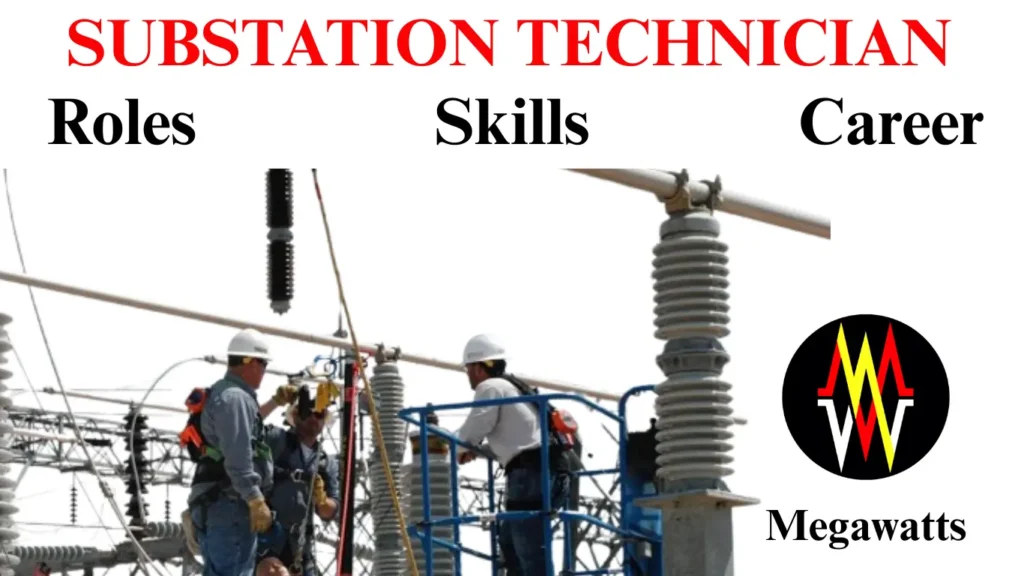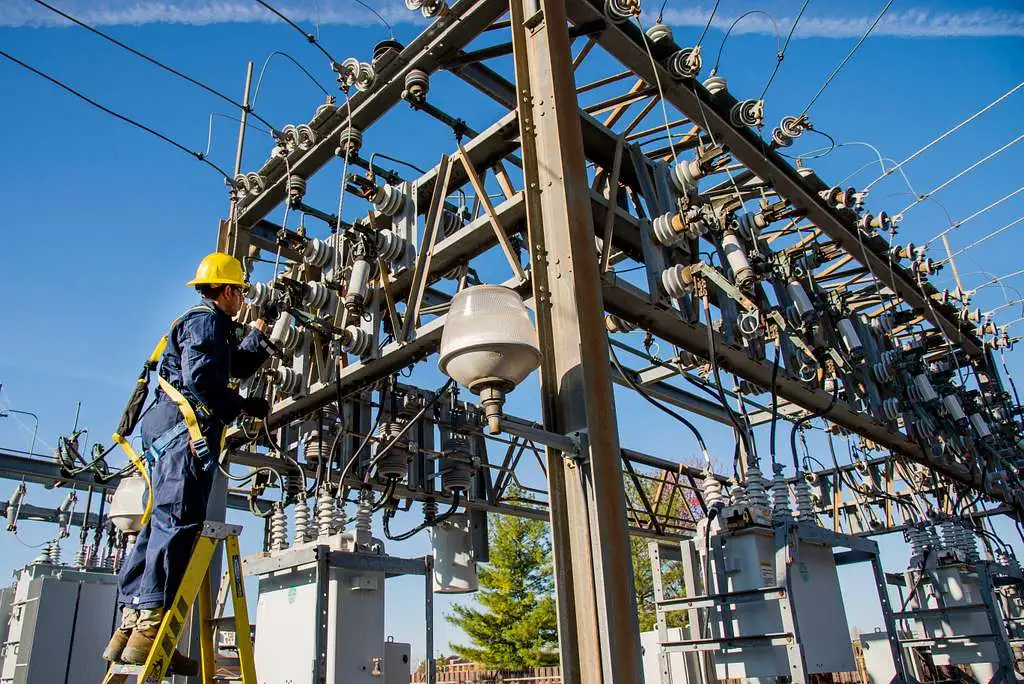
A substation technician is a skilled professional who helps the engineer with the installation, testing, operation, and maintenance of the substation equipment. The substation technician, along with the engineer, makes sure that the substation operates efficiently and reliably. The critical substation equipment requires continuous monitoring, such as the transformer, battery system, SCADA, control wiring, etc. Any development of a fault in these components can be detrimental and cause a power outage, which is undesirable.
Table of Contents
Role of Substation technicians
Installation of substation equipment: Substation technicians play a key role in the installation of the major substation equipment, like transformers, circuit breakers, current transformers, isolators, etc. They align the equipment to their respective places with the help of cranes, sometimes with ropes and pulleys, fixing it properly in the respective foundation. They ensure proper and precise electrical connections, as well as the grounding, with the help of the engineer’s drawing and direction as per the installation standards/ manual. The performance of the equipment depends upon the precise installation. It helps enhance the equipment’s life, reducing failure and ensuring a smooth integration into the grid.
Routine inspection: For preventive maintenance to be done on the substation equipment, a routine inspection is essential. The substation technicians need to check the critical electrical equipment on a regular basis. The routine checks include oil level in the transformer, gas pressure in the circuit breakers, condition of the busbar, insulator cleanliness, and thermal hotspots on the equipment.
The preventive maintenance requires the substation technician to tighten the loose electrical connections, which otherwise give out high thermal signatures, lubricate the moving parts of the isolators, and replace the worn-out components. The preventive maintenance helps ensure high equipment life, minimizes outages by reducing unexpected breakdowns, and thus improves safety. The substation technician helps the engineer plan and schedule preventive maintenance to avoid costly outages.
Testing of Equipment: The substation technician helps the engineer to conduct tests on various substation equipment, like current transformers, potential transformers, protective relays, circuit breakers, which help in ensuring accurate measurement, metering, and fault protection. The substation technicians do the ratio test, insulation resistance test, polarity check, and relay calibration to ensure proper operation. The protective relay’s pickup value, timing, and tripping logic are checked. These test ensures proper functioning of the relays for isolation of faults. Proper testing ensures optimal operation, enhances equipment life, and ensures the safety of substation personnel.
Fault identification: The substation technicians must identify the electrical faults in the circuits easily. When a circuit trips, due to overcurrent, earth fault, or overloading reasons, the substation technicians must be capable of analyzing the SCADA alarms, IED’s indications, reading the type of fault, and locating the issue. Common faults like the station transformer’s DO fuse failure, breaker’s malfunction, mis-operation of relays, etc. by addressing these issues and applying corrective measures the technicians can promptly restore normal operation in the substation.
SCADA operation: The substation technician must have an acquaintance with the substation SCADA to monitor and manage the substation control in real-time. As the SCADA provides the real-time power parameters like voltage, current, loading of lines, frequency, etc. The operator can manage the substation via remote operation of various equipment from the control room, check alarms and events for any abnormal power parameter of substation equipment, as well as check the historical data and analyse the trend. SCADA makes the substation more efficient, reliable, and responsive, and also adds security to substation technicians by making remote operations possible.
Switching and isolation of circuits: Substation technicians must follow the SOPs for the switching, isolation, and grounding of the circuits as a high-voltage substation requires strict compliance with the safety codes of the utility. The use of protective gear, suits, and electric compliance gloves and shoes, and safety tags is a must. Ensuring the absence of voltage and the status of the circuit breaker before beginning operation adds to safety. The SOPs ensure that no electrical accidents occur while the technician is working. By strict following of the codes, the technicians make sure of their own safety and the equipment’s safety as well.

Skills required
Electrical Wiring: A substation technician must be proficient in electrical wiring, including control circuits, relay panels. He/she should know how to read the panel wiring diagrams and the substation SLD. He/she must have an idea of the right cable sizes for maintaining proper insulation. These skills are necessary for troubleshooting electrical faults in the control circuit of the equipment.
Computer Skills: The technician must have some basic computer skills so that he/she can grasp the system operation from the substation SCADA quickly and be efficient in it. This includes basic knowledge of the operating system and software applications so he/she can understand and acknowledge alarms, read alarms, and historical data from the SCADA system.
Strong Electrical Skills: The substation technician must have a strong base in the electrical subject. For handling high-voltage equipment and understanding power parameters, he/she must have a sound knowledge of electrical basics. It is only the skilled technicians who can operate high-voltage switching devices, troubleshoot electrical faults, and maintain system reliability. He/she must have an idea of short circuit, open circuit, and insulation failure, and must be skilled in the use of a multi-meter, clamp meter, and insulation tester.
Problem Solving: The substation technician must have a problem-solving attitude, as the substation environment demands quick thinking and effective execution. He/she must be prepared to face unexpected faults, failure of equipment, and the raising of alarms. By correct analysis of the situation and application of corrective measures, he/she can restore power quickly and reduce the outage. A positive attitude towards problem-solving and teamwork reduces the downtime of the substation. A substation technician must prioritize self-safety at all times. He/she must have ideas on electrical clearances and must follow guidelines for self and team’s safety. In the process of self-safety, it also adds to equipment safety.
Educational Requirements
The substation technicians must have a high school leaving certificate, along with an electrical trade certificate for the operation and maintenance of the electrical system. Specialized training in SCADA, high voltage systems, and equipment testing also helps.
Career opportunities
Substation technicians are highly valued in government and private utility companies related to the transmission and distribution of power.
EPC contractors and firms also look for these technicians for the installation, testing, and commissioning of ongoing and upcoming projects.
Independent power producers need substations for the evacuation of power produced, and substation technicians play a critical role in these substations.
Renewable projects: Technicians with substation expertise are sought after with the expansion of renewable energy projects to help with the grid integration.
A career in substation offers multiple roles based on experience. The technicians at the entry level are engaged in basic inspection and maintenance. With experience, they can progress to supervisor roles, managing teams and coordinating operations and maintenance of the substation.
This article is a part of the page Substation Guide.
